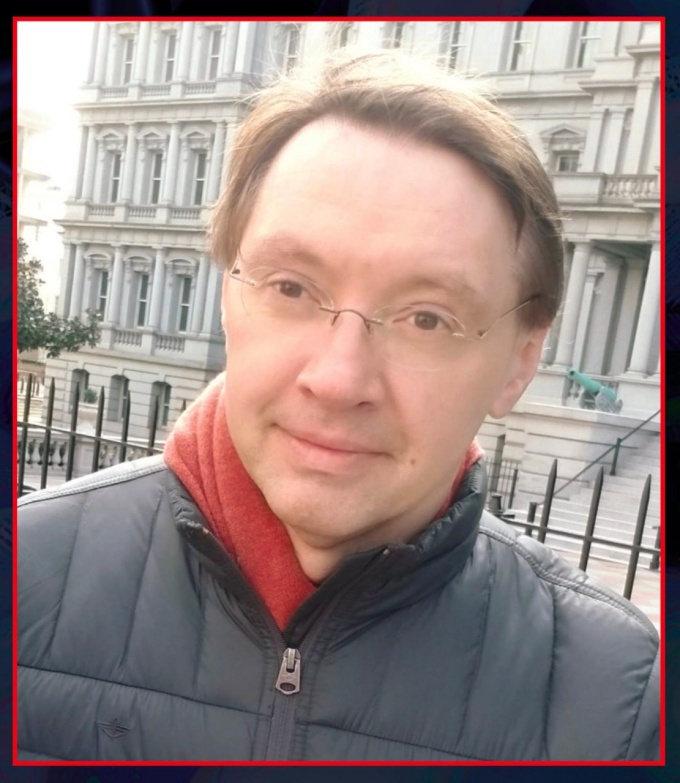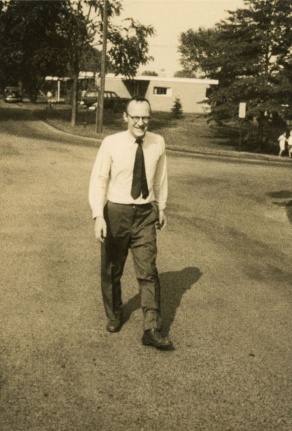Hosting distinguished mathematicians from around the world
Myhill Lecture Series
Since 1988, the Myhill Lecture Series has featured special presentations and lectures by distinguished mathematicians from around the world. The series is named to honor John R. Myhill, Sr., who served as a UB Mathematics professor from 1966 to 1987. Myhill graduated from Harvard University in 1949. His dissertation is titled, A Semantically Complete Foundation for Logic and Mathematics. The UB Mathematics John R. Myhill Lecture Series is funded, in part, by the Darwin D. Martin endowment.
Myhill Lecture Series 2025
Mikhail Khovanov (Johns Hopkins University)

Mikhail Khovanov, PhD
April 30, May 1 & 2, 2025, join us for the 35th Edition of the Myhill Lecture Series: Link homology and other applications of defect networks, featuring Mikhail Khovanov (Johns Hopkins University). Khovanov's three talks include: Topological quantum field theories in classical computation and in graph theory; Diagrammatics of categorified quantum groups; and, Link homology from foams. Each talk begins at 4 pm in 250 Mathematics Building, North Campus.
Contact: Daniel Sage, dsage@buffalo.edu
Link homology and other applications of defect networks
April 30, 2025, Wednesday, 4:00 P.M.
250 Mathematics Building
Lecture 1: Topological quantum field theories in classical computation and in graph theory
Abstract: The relation between TQFTs (topological quantum field theories) and quantum computation is well-known. We will explain a relation between one-dimensional TQFTs with defects and finite state automata and a relation between two-dimensional TQFTs and graph theory, including graph homomorphisms and perfect matchings.
May 1, 2025, Thursday, 4:00 P.M.
250 Mathematics Building
Lecture 2: Diagrammatics of categorified quantum groups
Abstract: How to take the divided power of a functor? We explain the construction, based on nilHecke algebras, and its extension to categorification of quantum groups.
May 2, 2025, Friday, 4:00 P.M.
250 Mathematics Building
Lecture 3: Link homology from foams
Abstract: A perfect model for link homology is a functor from the category of link cobordisms to the category of vector spaces or abelian groups. The talk will review the construction of such a functor based on Robert-Wagner foam evaluation.
Bio: Mikhail Khovanov is a Russian-American professor of mathematics who works on representation theory, knot theory, and algebraic topology. He is known for introducing Khovanov homology for links, which was one of the first examples of categorification. Khovanov earned a PhD in mathematics from Yale University in 1997, where he studied under Igor Frenkel.
Research Interests: Categorification, representation theory, low-dimensional topology
Wikipedia: In 2000 Mikhail Khovanov constructed a certain chain complex for knots and links and showed that the homology induced from it is a knot invariant (see Khovanov homology). The Jones polynomial is described as the Euler characteristic for this homology.
Link homology and other applications of defect networks
Mikhail Khovanov (Johns Hopkins University)
April 30, May 1 and 2, 2025
Wednesday, Thursday, Friday
4:00 P.M. each day
250 Mathematics Building
UB North Campus
Myhill Lecturers (Selected)
Victor Kac (MIT) November 1988
David Saltman (U. of Texas, Austin) February 1989
Cameron Gordon (U. of Texas, Austin)
Combinatorial Methods in Knot Theory. March 1990
Armand Borel (IAS), L2-Harmonic Forms and Topological Invariants History of Full Reducibility and Invariants for SL2. November 1990
Leon A. Takhtajan (U. of Colorado)
Geometry and Physics: Uniformization of Riemann Surfaces, Complex Geometry of Moduli Spaces and Two-Dimensional Quantum Gravity. November 1991
Ross Street (Macquarie Univ.) Categorical Structures in Mathematical Physics and Computing (and Vice Versa). April 1993
Peter Kronheimer (Oxford U. and IAS) March 1994
Stuart Antman (U. Maryland)
Dissipation and Its Delights. March 1995
V. Kumar Murty (U. of Toronto)
Fermat's Last Theorem, Congruences and L-Functions. April/May 1996
DeWitt Sumners (Florida State University, Tallahassee)
The Topology of DNA. April 1997
Robert V. Kohn (NYU-Courant Institute)
The Mathematics of Material Microstructure. April 1998
Gang Tian (MIT)
Quantum Cohomology. March 1999
Hyman Bass (Univ. of Michigan)
Tree Lattices
; Rigid Discrete Groups. April 2000
Andre Kirillov (Univ. of Pennsylvania)
The Orbit Method in Representation, Theory of Lie Groups and Beyon. March 2001
Robert K. Lazarsfeld (Univ. of Michigan at Ann Arbor)
Multiplier Ideals and their Applications in Algebraic Geometry. April 2002
Serguei Novikov (University of Maryland and Landau Institute for Theoretical Physics (Russia)
Low Dimensional Topology in Analysis and Physics. April 2003
Christophe Margerin (Ecole Polytechnique, C.M.L.S.)
The Ricci flow to geometrize 3-manifolds. April 2004
Vladimir E. Zakharov (Univ. of Arizona)
Nonlinear waves, geometry, and integrable systems. April 2005
William Arveson (University of California, Berkeley) Operator Theory and the K-Homology of Algebraic Varieties. April 2006
Jonathan David Farley (University of the West Indies, Jamaica)
The Many Lives of Lattice Theory. March 2007
Benson Farb (University of Chicago)
Hidden Symmetry:
The Torelli group: algebra, topology and dynamics. March 2008
Mark Kisin (University of Chicago)
p-adic Hodge Theory. April 2009
George Papanicolaou (Stanford University)
Imaging with Noise. March 2010
Benjamin Weiss (Hebrew University)
The Isomorphism Problem in Ergodic Theory. April 2011
Mladen Bestvina (University of Utah) April 2012
Peter Sarnak (Princeton University and IAS) March 2013
Percy Deift (Courant Institute)
Talks on Matrices. October 2013
Ciprian Manolescu (UCLA)
Non-triangulable manifolds via gauge theory. April 2015
Gopal Prasad (University of Michigan) Number Theory in Geometry. October 2016
Guoliang Yu (Texas A & M University) Groups, Manifolds, and Higher Invariants of Elliptic Operators. September 2017
Mark Newman (University of Michigan) Lecture 1: Epidemics, Erdos numbers, and the Internet: The mathematics of networks; Lecture 2: Randomized models of networks; Lecture 3: Phase transitions and belief propagation in sparse networks. October 2018.
Laura DeMarco (Northwestern University) Complex dynamics and arithmetic geometry, September 2019.
Gigliola Staffilani (MIT) The study of wave interactions: where beautiful mathematical ideas come together, October,2022.
Tomasz Mrowka (MIT) Forty Years of Four Manifolds, April 2024.
Short bio: John R. Myhill, Sr.

John R. Myhill, Sr. photograph courtesy of Paul Halmos
John R. Myhill, Sr. (11 August 1923 – 15 February 1987) was a British mathematician. He received his Ph.D. from Harvard University under Willard Van Orman Quine in 1949. He was professor at SUNY Buffalo from 1966 until his death in 1987. He also taught at several other universities. His son, also named John Myhill, is a professor of linguistics in the English department of the University of Haifa in Israel.
Since 1988, the Myhill Lecture Series hosted by UB Mathematics has featured over two dozen distinguished mathematicians from around the world.










